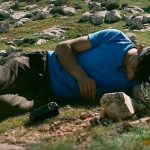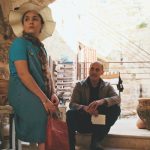Turkeys public broadcaster Turkish Radio & Television is looking to revamp its Arabic broadcasting service, with plans to launch multiple bureaus across the region and revisit the existing infrastructure at its headquarters in Istanbul, BroadcastPro ME can reveal. The revamp will include a complete overhaul of the broadcasters technical infrastructure and content programming on TRT […]

Turkeys public broadcaster Turkish Radio & Television is looking to revamp its Arabic broadcasting service, with plans to launch multiple bureaus across the region and revisit the existing infrastructure at its headquarters in Istanbul, BroadcastPro ME can reveal. The revamp will include a complete overhaul of the broadcasters technical infrastructure and content programming on TRT Arabic, which has been operational since 2010. TRT Arabic, which used to run 10 hours of daily live broadcast, will soon include a completely new grid with more news services, current affairs shows and business and sports programming.
As part of this overhaul, TRT is also looking to centralise and streamline its technical operations. Although a date for the relaunch has not been confirmed, the broadcaster is tentatively looking to take the new service to air by the end of September. The project delivery is being managed internally by TRTs technical operations team, headed by Ali El-Husseini and Mohammed Akhlaq.
Speaking to BroadcastPro ME about the overhaul, Ali El-Husseini, Vice Director of Technical Operations, commented: We are taking advantage of the newly launched TRT world English service to also centralise our operations, so that TRTs MCR, ingest, archive and media management functions will be centralised in terms of both technology and operations to serve both channels in a seamless and efficient manner.
The facility overhaul will include building a new newsroom, two studios, control rooms as well as all associated broadcast services. Multiple vendors and local systems integrators Arttek and Teratek have been contracted to assist TRTs technical operations team. The two new studios are being designed by RAST, a Turkish studio design company. While one news studio will be used to host news services, another dedicated studio is being designed for the flagship morning show and current affairs.
Core solutions that will be used within this project include the GV Stratus, which will serve as the newsroom production system; Avid iNews, which will be the NRCS; and graphics and AR solutions from Vizrt. Key elements of the studio will be a 100sqm videowall, super flat LED screens along with on-screen furniture, and TX graphics.
This is one of the largest VM (virtual machine) installations in the region with all of the core services, including media transcoding and production, running within a virtual ecosystem. What we will have once the project is completed is new and fresh modern branding supported by a centralised news production and broadcast operations model, noted El-Husseini.
One of the big challenges TRT is facing, like most other broadcasters undertaking such transformation projects, is to ensure that existing broadcasting services are not disrupted.
The challenges are a bit complicated as this isnt a green field installation, said Hikmet Kocaman, VP of the TV Department at TRT Network. The channel is already on air while the build is taking place in parallel. As a result, we have had to go through a complex migration plan for more than 100 editorial staff, transitioning the studio locations seamlessly while also connecting the two channels into a new centralised infrastructure.
To enable this, the team first completed building the network infrastructure for both channels prior to initiating the migration, to ensure that there would be no on-air impact. This work is still ongoing.
Once the project is completed, TRT hopes to have a more ambitious Arabic service in place that can compete with other Arabic news channels in the region.
Speaking about the project and the relaunch, Mohammed Akhlaq, Director of Technical Operations, TRT World, said: This is a transformational project. It is as much about changing the way we broadcast news to cater to recent viewership demands as it is about transforming the workplace so that our journalists are empowered to stay competitive and deliver quality news around the world. Revamping the look and feel of the channel will also allow our editorial and operational teams to be more agile and meet the needs of changing challenges.













































































